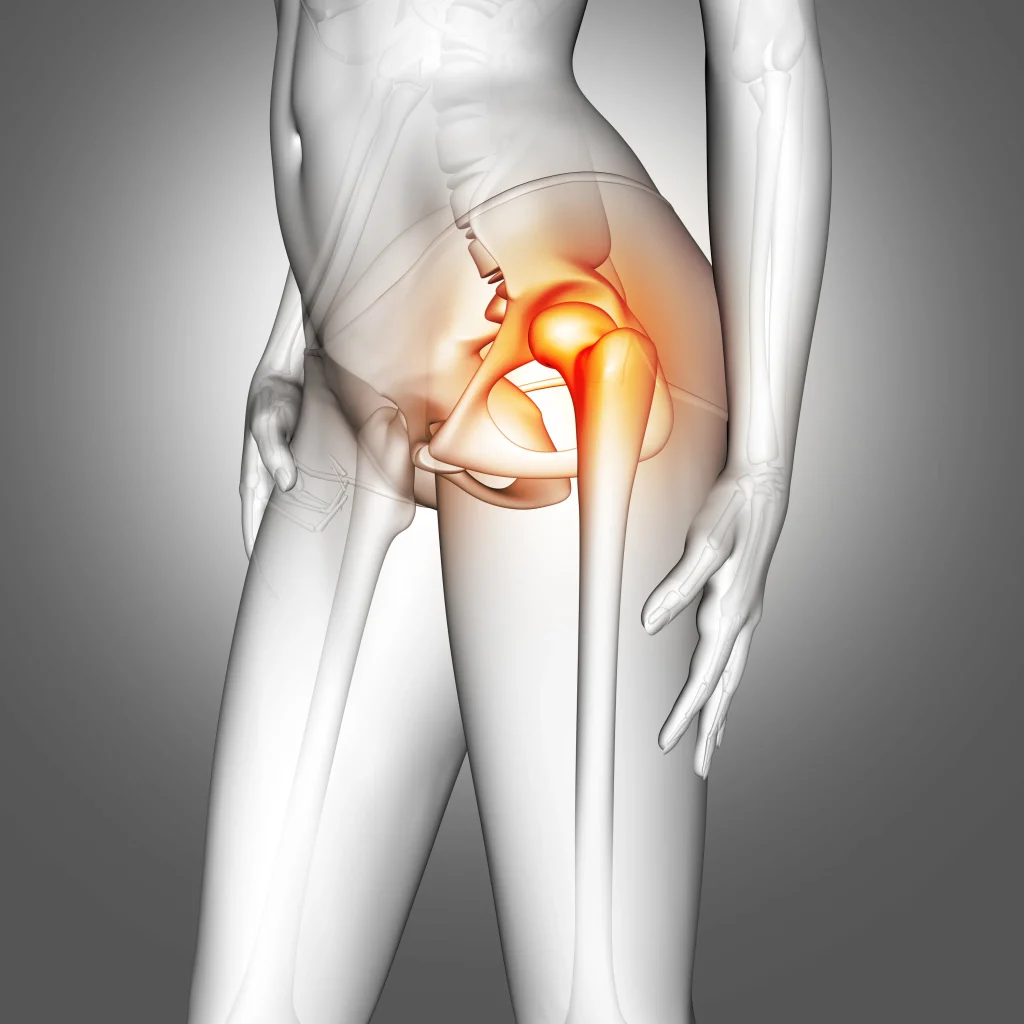Joint-preserving hip surgery
Introduction to joint-preserving hip procedures
Joint preservation procedures of the hip are advanced surgical techniques that aim to preserve the natural joint structure while treating conditions such as dysplasia, osteoarthritis and avascular necrosis. These procedures are designed to delay or even prevent the need for total hip replacement by restoring joint function, relieving pain and improving mobility.
When the hip joint is compromised by structural abnormalities or cartilage damage, procedures such as osteotomies, cartilage grafts and joint reconstructions can be performed to improve alignment and distribute weight more evenly. These techniques are particularly beneficial for younger and active patients who want to preserve their natural joint for as long as possible.

What are joint-preserving hip procedures?
Joint preservation procedures focus on correcting structural problems of the hip to restore normal biomechanics and prolong the life of the natural joint. In contrast to total hip replacement, these methods aim to preserve the integrity of bone and cartilage while treating the underlying conditions.
The most common joint-preserving procedures include
- Osteotomies: Surgical realignment of the hip joint to improve weight distribution.
- Cartilage transplantation: restoration of damaged cartilage with biological transplants or synthetic scaffolds.
- Bone grafting: procedure to restore bone substance and structure.
- Joint alignment: correction of misalignments to improve function and reduce degeneration.
Osteotomies for hip preservation
Osteotomies are surgical procedures to reshape or realign the hip joint. They are often used to treat hip dysplasia or femoroacetabular impingement (FAI). The aim is to correct the abnormal hip anatomy, redistribute joint pressure and reduce the risk of cartilage degeneration.
Types of hip osteotomies
- Pelvic osteotomy: Often performed in younger patients with hip dysplasia. The acetabulum (hip socket) is repositioned to ensure better coverage of the femoral head, reduce pain and improve function.
- Intertrochanteric osteotomy: This operation changes the angle of the femoral shaft in order to improve the biomechanics of the hip joint. It is often used for osteoarthritis due to hip dysplasia.
- Femoral osteotomy: Corrects rotational deformities of the femur and is often used in pediatric patients or individuals with congenital hip anomalies.
Cartilage transplantation and bone grafting on the hip
Cartilage and bone grafts are effective solutions for treating localized cartilage damage or bone defects in the hip joint. These procedures aim to restore joint integrity and function and delay the progression of osteoarthritis.
Cartilage transplantation techniques
- Autologous chondrocyte implantation (ACI): Healthy cartilage cells are removed from the patient, cultivated in the laboratory and then implanted into the damaged area to regenerate new cartilage.
- Osteochondral autograft transplantation (OAT): A healthy cartilage and bone cylinder is removed from a non-weight-bearing area of the joint and transplanted into the damaged region.
- Allograft transplantation: Cartilage and bone transplants from donors are used to treat large defects, particularly in cases of advanced joint damage.
Bone grafting techniques
Bone grafts are used in cases of significant bone loss, often due to avascular necrosis or trauma. Grafts can be either autologous (from the patient’s own body) or allogeneic (from a donor). This technique provides structural support and promotes the growth of new bone.
Joint alignment and reconstruction
Correcting joint alignment is critical when abnormal biomechanics contribute to joint degeneration. By restoring the natural hip alignment, these procedures help to prevent further wear and tear.
Advantages of joint alignment
- Improved weight distribution and reduced stress on damaged cartilage.
- Increased joint stability and function.
- Delaying the need for total hip replacement in younger patients.
Who can benefit from joint-preserving procedures?
These procedures are particularly advantageous for:
- Young and active patients who want to delay or avoid a total hip replacement.
- People with hip dysplasia or incipient osteoarthritis.
- Patients with femoroacetabular impingement (FAI) and hip pain.
- Patients with localized cartilage damage or avascular necrosis.
Success rates and case studies
Studies show that joint-preserving procedures, particularly osteotomies and cartilage transplants, can significantly improve long-term joint function. Patients often report pain relief and increased mobility, with success rates of over 80% in carefully selected cases.
Frequently asked questions
The recovery time varies depending on the procedure, but is usually between 3 and 6 months, including physiotherapy and rehabilitation.
For younger patients with localized joint damage, joint-preserving procedures can delay the need for hip replacement and preserve natural joint function.
As with any surgery, there are risks such as infection, blood clots and incomplete symptom relief. However, success rates are high with experienced surgeons.
Patients with severe osteoarthritis or pronounced cartilage loss may not benefit from these procedures and are more suitable for a hip replacement.
A thorough examination by an orthopaedic surgeon, including imaging procedures, will help determine whether a joint-preserving approach is appropriate for your condition.
Contact and further information
Please contact me for further information or to make an appointment at my practice in Vienna.